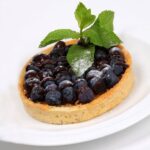Icing plays a crucial role in elevating the overall look and taste of a cake, making it a key element in cake decoration. Whether you’re a beginner baker or an experienced pastry chef, knowing how much icing to use is essential for achieving the desired aesthetic and flavor profile of your creations.
In this article, we will delve into the world of cake decorating with icing, exploring different types of icing options, factors to consider when determining quantities, essential tools and techniques, tips for success, common mistakes to avoid, and even some mouth-watering recipes and creative ideas for inspiration.
When it comes to cake decoration, there are various types of icing to choose from such as buttercream, royal icing, fondant, and ganache. Each type has its own unique characteristics, pros, and cons that can influence the overall look and taste of your final masterpiece. Understanding these distinctions will help you determine which type of icing is best suited for your specific cake decorating needs.
Factors such as the size and shape of the cake, the complexity of the design you have in mind, and personal preference all play a significant role in how much icing is required to decorate a cake effectively. By considering these variables carefully and estimating quantities accordingly based on the size of your cake and desired decoration style, you can ensure that you have just the right amount of icing to bring your vision to life.
Types of Icing
When it comes to decorating a cake, choosing the right type of icing is essential for achieving the desired look and taste. There are several options available, each with its own unique characteristics and uses. Here is a breakdown of some popular types of icing that you can use to decorate your cakes:
- Buttercream: Buttercream icing is a classic choice known for its creamy texture and rich flavor. It is versatile and easy to work with, making it ideal for piping borders, roses, and other intricate designs.
- Royal Icing: Royal icing has a smooth, hard finish when dried, making it perfect for intricate details like lacework or lettering. However, it can be challenging to work with due to its quick drying time.
- Fondant: Fondant is a smooth, pliable icing that creates a sleek finish on cakes. It is great for creating clean, polished designs and is often used in wedding cakes or special occasion desserts.
- Ganache: Ganache is made from chocolate and cream, resulting in a luscious frosting that can be poured over cakes for a glossy finish or whipped into peaks for a fluffy texture. It adds a rich flavor to cakes and pairs well with various fillings.
Each type of icing has its pros and cons, so consider factors such as the desired look, taste preferences, and ease of application when choosing the best option for your cake decoration project. Experimenting with different types of icing will allow you to discover which works best for your specific needs.
In addition to selecting the right type of icing for your cake decoration project, it’s important to also consider the quantity needed based on the size and design complexity of the cake. Estimating how much icing is required ensures that you have enough to cover the entire cake while avoiding excess wastage or running out mid-decoration process. Keep reading to find out how you can accurately estimate the amount of icing needed for your next baking endeavor.
Factors to Consider
When it comes to decorating a cake with icing, there are several factors to consider that can influence how much icing you will need. The size and shape of the cake play a significant role in determining the quantity of icing required.
A larger cake will naturally require more icing to cover its surface, while a smaller one will need less. Likewise, round cakes may need less icing compared to square or uniquely shaped cakes due to their smoother surface area.
The design complexity of the cake is another crucial factor in deciding how much icing to use. Intricate designs that involve piping details, intricate patterns, or elaborate decorations will require more icing than simple, minimalist designs. Additionally, if you plan on creating multiple layers on your cake or incorporating 3D elements like flowers or figures, you will need additional icing to achieve your desired look.
Personal preference also plays a role in determining how much icing you will need to decorate your cake. Some bakers prefer a thicker layer of frosting for a more indulgent treat, while others may opt for a thinner coat for a lighter taste. Understanding your preferred level of sweetness and texture will help you gauge the amount of icing needed accurately.
- Size and shape of the cake
- Design complexity
- Personal preference
Ultimately, by considering these factors – the size and shape of the cake, the design complexity, and personal preference – you can better estimate how much icing you’ll need to successfully decorate your cake and achieve the desired outcome.
- Factors that influence how much icing is needed:
- Size and shape of the cake
- Design complexity
- Personal preference
Estimating Quantities
When it comes to decorating a cake, one of the key factors to consider is how much icing will be needed to achieve the desired result. The amount of icing required can vary depending on the size and shape of the cake, as well as the complexity of the design you wish to create. Estimating these quantities accurately is essential to avoid running out of icing halfway through decorating or having an excessive amount left over.
Size and Shape of the Cake
The size and shape of your cake will play a significant role in determining how much icing you will need. Larger cakes, such as sheet cakes or tiered cakes, will naturally require more icing to cover and decorate adequately. On the other hand, smaller round cakes may need less frosting but could require more precision in spreading or piping.
Desired Decoration Style
The style of decoration you have in mind will also impact how much icing is necessary. Intricate designs that involve intricate piping work, multiple layers of frosting, or textured effects will consume more icing compared to a simple frosted cake with minimal decorations. Consider whether you plan on covering the entire cake with a smooth finish or if you aim for a more rustic appearance with exposed cake layers peeking through.
Tools and Techniques
Decorating a cake with icing is not only about the type of frosting used but also about the tools and techniques employed. Essential tools like piping bags, offset spatulas, and stencils can make a significant difference in achieving a beautifully decorated cake. Piping bags are versatile and come in different sizes for different design needs. They allow for precise control over the flow of icing, making intricate designs possible.
Offset spatulas are another indispensable tool when it comes to icing a cake. These long, flat utensils make it easier to spread icing evenly across the surface of the cake without disturbing its crumb structure. Offset spatulas also help create smooth finishes on the sides and top of the cake. They are perfect for achieving professional-looking results, especially when working with buttercream or ganache.
In addition to piping bags and offset spatulas, stencils can add an extra dimension to your cake decorations. Stencils come in various designs and patterns that can be used with powdered sugar, cocoa powder, or even colored icing to create stunning visuals on cakes. With the right tools at your disposal, you can elevate your cake decorating skills and create delectable treats that not only taste delicious but also look visually appealing.
| Tools | Importance |
|---|---|
| Piping Bags | Allow for precise control over icing flow |
| Offset Spatulas | Help spread icing evenly for smooth finishes |
| Stencils | Add decorative patterns and designs to cakes |
Tips for Successful Decoration
Smoothing Techniques
One of the keys to achieving a polished and professional-looking cake decoration is mastering smoothing techniques. After applying a layer of icing to your cake, use a bench scraper or an offset spatula to smooth out any rough edges or bumps. To achieve a perfectly smooth finish, you can also try the Viva paper towel method: gently press a clean, smooth paper towel against the icing and carefully peel it away to create a flawless surface.
Color Mixing
Creating custom colors for your cake icing can elevate your decoration skills and add a personal touch to your design. When mixing icing colors, start with small amounts of gel food coloring to avoid over-saturating the icing. Use a toothpick or a clean paintbrush to gradually add color until you achieve the desired shade. Remember that colors may deepen as they sit, so allow some time for the hues to develop before making any adjustments.
Texture Variations
Adding texture variations to your cake decoration can enhance visual interest and create dynamic designs. Experiment with different decorating tips, such as star tips for rosettes or basketweave patterns, and piping techniques like ruffles or zigzags. You can also incorporate edible decorations like sprinkles, edible pearls, or fondant cutouts to add dimension and whimsy to your cakes. Don’t be afraid to get creative and play around with various textures to make your cakes stand out.
Common Mistakes to Avoid
One common mistake in cake decoration that can result in uneven icing distribution is applying too thin of a layer of icing. When the icing layer is too thin, it may not provide enough coverage for the cake, leading to an uneven appearance.
To avoid this mistake, make sure to apply a generous amount of icing and spread it evenly across the cake’s surface using a spatula or scraper. Building up layers gradually can also help achieve a smooth and even finish.
Another issue that often arises when decorating cakes is the presence of air bubbles in the icing. Air bubbles can create undesirable blemishes on the cake’s surface and disrupt the overall look of the design. To prevent air bubbles from forming, it is essential to properly mix and prepare the icing before application. Additionally, gently tapping the cake on a flat surface after icing can help release any trapped air bubbles.
Color discrepancies in icing can occur when attempting to achieve vibrant or pastel shades. Adding too much food coloring at once can result in a darker or more intense color than desired, making it challenging to correct without affecting the consistency of the icing.
To avoid color discrepancies, add food coloring gradually while mixing until you reach the desired shade. It is also helpful to use gel-based food colors as they are more concentrated and require less product to achieve vibrant hues.
| Common Mistake | Solution |
|---|---|
| Applying too thin of an icing layer | Apply a generous amount of icing evenly across the cake’s surface |
| Presence of air bubbles in the icing | Mix and prepare the icing properly before application; gently tap cake on flat surface after icing |
| Color discrepancies due to adding too much food coloring | Add food coloring gradually while mixing until desired shade is reached; use gel-based colors for better control |
Recipes and Inspiration
In the world of cake decoration, the icing plays a crucial role in bringing a cake to life with color, texture, and flavor. Determining how much icing to decorate a cake can be a daunting task, as it is influenced by various factors such as size, shape, design complexity, and personal preferences. However, understanding these factors and estimating the quantities needed can help you achieve the perfect balance between visual appeal and taste.
When considering the types of icing to use for your cake decoration, options like buttercream, royal icing, fondant, and ganache each have their own unique qualities that can contribute to the overall look and taste of your creation. Buttercream is versatile and easy to work with for creating smooth finishes or intricate details. Royal icing provides a hard shell ideal for intricate designs or gingerbread houses.
Fondant offers a polished look perfect for sculpting shapes or creating sleek finishes. Ganache adds a luxurious touch with its rich chocolatey flavor perfect for decadent desserts.
As you embark on your cake decorating journey, having the right tools and techniques at your disposal can make all the difference in achieving professional-looking results. From piping bags and offset spatulas for precise application to stencils for creating intricate patterns, these tools can help bring your creative vision to life on your cakes.
Additionally, mastering essential techniques like smoothing icing surfaces, color mixing to achieve desired shades, and incorporating texture variations can elevate your decorations from amateur to expert-level craftsmanship.
In conclusion, whether you are an amateur baker looking to improve your skills or a seasoned pro seeking fresh ideas, exploring different icing recipes and drawing inspiration from themed cakes and seasonal designs can ignite your creativity in new ways.
By understanding how much icing you need based on your cake’s size and design complexity while utilizing proper tools and techniques effectively, you can craft stunning edible works of art that delight both the eyes and taste buds of those fortunate enough to enjoy them.
Frequently Asked Questions
How Many Cups of Frosting Do I Need for an 8 Inch Cake?
The amount of frosting needed for an 8-inch cake can vary depending on the thickness of the frosting layer you prefer. As a general guideline, you would typically need around 2 to 3 cups of frosting to cover and frost a standard 8-inch cake.
Is One Container of Icing Enough for a Cake?
Whether one container of icing is enough for a cake depends on the size and type of cake you are making. A single container of icing may be sufficient for a smaller cake, but for larger or multi-layer cakes, you might need more than one container to ensure adequate coverage.
Is One Can of Frosting Enough for a Cake?
One can of frosting should be adequate for a standard-sized cake, especially if you are looking to achieve a moderate layer of frosting. However, if you prefer a thicker layer or have a larger cake to frost, you may require more than one can to ensure complete coverage and desired thickness.

Welcome to my blog about home and family. This blog is a place where I will share my thoughts, ideas, and experiences related to these important topics. I am a stay-at-home mom with two young children. I hope you enjoy reading it! and may find some helpful tips and ideas that will make your home and family life even better!





